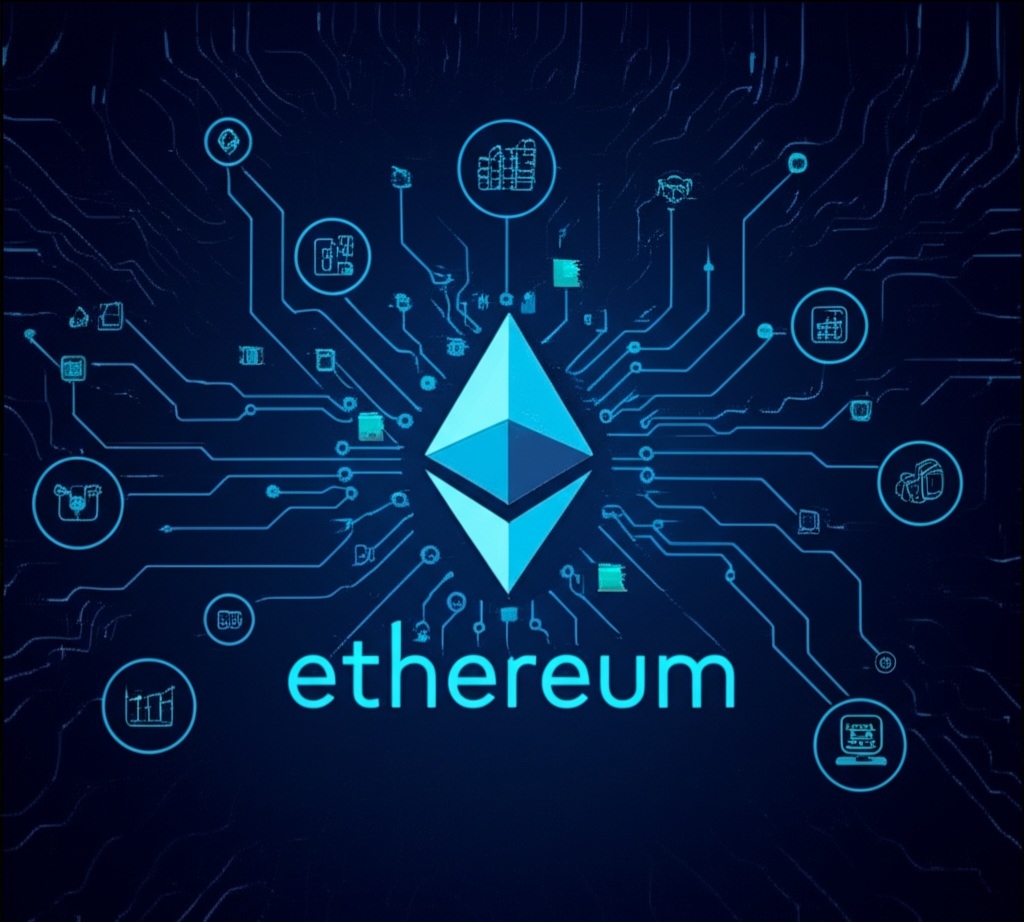The Unstoppable Force: Understanding the Power of the Ethereum Network
In the ever-evolving landscape of technology, the Ethereum network stands as a revolutionary force, reshaping industries and redefining the possibilities of the digital world. Conceived in 2013 by Vitalik Buterin and launched in 2015, Ethereum has grown from a novel concept to a global infrastructure powering a vast ecosystem of decentralized applications (dApps), digital assets, and innovative solutions. Its power lies not just in its technological underpinnings but in the transformative potential it unlocks.
At its core, Ethereum is a decentralized, open-source blockchain platform. Unlike its predecessor, Bitcoin, which primarily functions as a digital currency, Ethereum was designed as a versatile platform to build and run a wide array of applications. It achieves this through its most groundbreaking innovation: smart contracts.
The Magic of Smart Contracts
Smart contracts are self-executing agreements written in code and stored on the Ethereum blockchain. These digital contracts automatically enforce the terms of an agreement when predefined conditions are met, without the need for intermediaries like banks or legal systems. This automation brings numerous advantages:
* Trust and Transparency: Because the code of a smart contract is publicly auditable on the blockchain, all participants can be certain of its terms and execution. This eliminates the need for trust in a central authority.
* Efficiency and Speed: Smart contracts execute automatically once the conditions are fulfilled, significantly reducing the time and costs associated with traditional contract processes.
* Security and Immutability: Once deployed on the blockchain, smart contracts cannot be altered. This immutability ensures that the agreed-upon terms remain secure and resistant to tampering.
The introduction of smart contracts opened up a universe of possibilities, paving the way for the development of decentralized applications (dApps). These are applications that run on the decentralized Ethereum network rather than on centralized servers, offering greater transparency, censorship resistance, and user autonomy.
A Thriving Ecosystem of Use Cases
The power of Ethereum is evident in the sheer diversity of applications and projects built upon its foundation. Some key areas where Ethereum is making a significant impact include:
* Decentralized Finance (DeFi): Ethereum has become the bedrock of the DeFi movement, enabling the creation of decentralized exchanges (DEXs), lending and borrowing platforms, stablecoins, and other financial instruments that operate without traditional financial institutions. This provides greater accessibility, transparency, and control over financial services. For instance, users can lend their cryptocurrency and earn interest or borrow assets directly from others without needing a bank.
* Non-Fungible Tokens (NFTs): Ethereum is the dominant platform for the creation and trading of NFTs, unique digital assets that represent ownership of items ranging from digital art and collectibles to virtual land and in-game items. NFTs have revolutionized digital ownership and created new avenues for creators and collectors alike.
* Decentralized Autonomous Organizations (DAOs): Ethereum facilitates the creation of DAOs, which are community-led organizations governed by code and smart contracts. This allows for transparent and democratic decision-making processes, empowering communities to manage resources and make collective choices.
* Supply Chain Management: The transparency and immutability of the Ethereum blockchain can be leveraged to track and verify the provenance of goods throughout the supply chain, enhancing efficiency and reducing the risk of fraud. For example, luxury goods or food products can be tracked to ensure their authenticity and origin.
* Gaming: Decentralized gaming applications built on Ethereum offer players true ownership of in-game assets, creating new economic models and immersive experiences.
* Identity Management: Ethereum can provide secure and self-sovereign identity solutions, giving individuals greater control over their digital identities and data.
The Ongoing Evolution: Ethereum 2.0 and Beyond
Recognizing the need for scalability and sustainability, the Ethereum network has undergone a significant upgrade known as Ethereum 2.0 (now largely implemented). This transition involved a shift from a Proof-of-Work (PoW) consensus mechanism to a more energy-efficient and secure Proof-of-Stake (PoS) system. Key benefits of this upgrade include:
* Increased Scalability: Sharding, a key component of the upgrade, aims to divide the network into smaller, more manageable segments to increase transaction processing speeds and reduce congestion.
* Enhanced Security: PoS incentivizes network participants (validators) to act honestly, making the network more resilient to attacks.
* Improved Energy Efficiency: PoS significantly reduces the energy consumption associated with running the network, making it more environmentally friendly.
* Lower Transaction Fees: The upgrades aim to reduce gas fees, making the network more accessible for users and developers.
Challenges and the Path Forward
Despite its immense power and potential, Ethereum also faces challenges. Scalability has been a long-standing concern, although the ongoing upgrades are addressing this. Competition from other blockchain platforms is also a factor, driving continuous innovation within the Ethereum ecosystem. Regulatory uncertainties in various jurisdictions also present a complex landscape for the network and its applications.
However, the vibrant and dedicated Ethereum community, coupled with the continuous technological advancements, positions the network as a leading force in the Web3 revolution. Its ability to adapt, innovate, and foster a diverse ecosystem of applications ensures its continued relevance and power in shaping the future of the internet and digital interactions.
In conclusion, the power of the Ethereum network lies in its foundational technology of smart contracts, its ability to host a vast and growing ecosystem of decentralized applications, and its ongoing evolution towards greater scalability and sustainability. It is more than just a cryptocurrency; it is a foundational layer for a new era of decentralized computing and digital ownership, empowering individuals and transforming industries in profound ways.




Comments